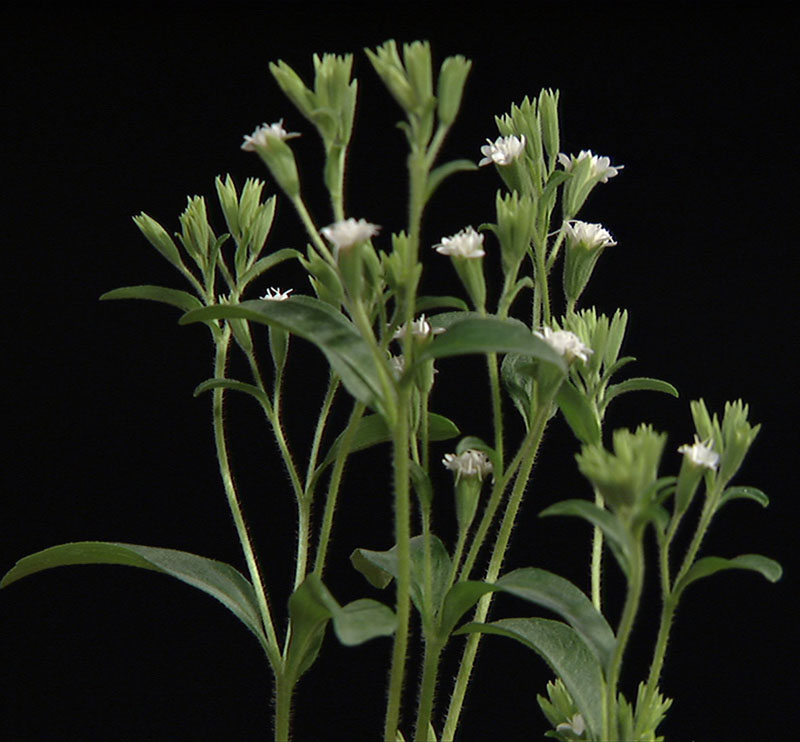Stevia natural sweetener: Trisha Shirey

Stevia has become a very popular sweetener with people who are looking to cut back on their sugar intake.
Unfortunately the plant is being processed to make it easier to use and as a result it is dramatically changed. If you read the ingredient labels of the most popular forms of stevia extract or powder, stevia is not even the first ingredient. There are stevia extracts that contain just stevia, so read the labels!
The plant is native to Paraguay and has been used in South America for centuries. It likes rich soil and sun to partial shade and has few pest problems – in fact it may cause insects to steer clear of surrounding plants. It is difficult to start from seed and the level of sweetness can vary greatly from plant to plant so it is generally grown from cuttings and is easily rooted.
It dies back in the winter. Once the top has frozen, cut the stems back, leaving 4 or 5 inches of the stems to protect the roots. The new growth appears early in the spring.
It grows to 18-30 inches tall and around 15 inches wide and has pretty white flowers.
Add a bit of compost around it and then mulch it, it doesn’t need much fertilizing. You may find that the flavor declines after several years of growth and the plant weakens so start cuttings each year to keep a steady supply.
The leaves can be cut back frequently once the plant is around six inches tall and they can be added to tea as you are brewing it. A little heat helps it to release its sweetness. I put fresh leaves in my glass and add a little warm water, then add ice and iced tea for cold drinks.
The leaves can be pulled from the stems and dried and added to drinks also. They taste even sweeter when dried.
Crush the dried leaves to release their flavor before adding. Don’t overdo as too much stevia can result in a bitter taste.
You can also dry the stevia leaves and grind them into a powder with a spice grinder or mortar and pestle to add to foods or you can add a cup of warm water to ¼ cup of dried stevia leaves to make a stevia extract. Wait 24 hours, and strain the leaves and refrigerate the extract.
Stevia can be used in cooking but it is best to substitute it for half the sweetener only, since it does not help with browning and texture like sugar does in baked goods. Use it in hot cereals, hot chocolate and other warm beverages, also in salad dressings, smoothies and dessert sauces with fruit.
You can also make an alcohol based liquid stevia extract that will store well. The recipe for that will be on the Central Texas Gardener web site.
Some people may have an allergic reaction to stevia, especially if they are particularly affected by ragweed. Sore throats and headaches have been reported after use.
There is another plant that is sometimes confused with stevia – Aztec Sweet Leaf. This is a low growing ground cover with leaves that look similar to lantana. It is not cold hardy so it seldom overwinters here. The leaves are very sweet tasting. It was used as a traditional folk medicine for coughs, colds and congestion. It has high levels of camphor that would make it effective as an expectorant. You would not want to consume large quantities of these leaves or use it as a sugar substitute and you should not allow small children to consume it due to the camphor levels.
Recipe for Stevia Extract
Trim stevia tops and wash them to remove any dirt. Remove excess water and place the branches on towels to air dry.
Strip the leaves from the stems and air dry the leaves and tops of the branches in a place with good air circulation. Chop the dried stevia leaves coarsely.
In a clean glass container, cover one cup of chopped, dried leaves with mild tasting vodka. Leave this in a dark place for 24 hours and strain out the leaves, first with a coarse strainer, then with cheesecloth, a coffee filter or fine mesh strainer, squeezing out as much of the liquid as possible from the leaves.
To remove some of the alcohol you can gently heat the extract for 15 to 20 minutes in a nonreactive pan (stainless steel or enamel coated). Do not let it boil.
Store the extract in the refrigerator. You can place it in a dropper bottle for ease of use since you will need just a few drops for most uses.
categories:
tags:
appeared on episodes:
